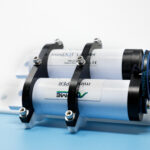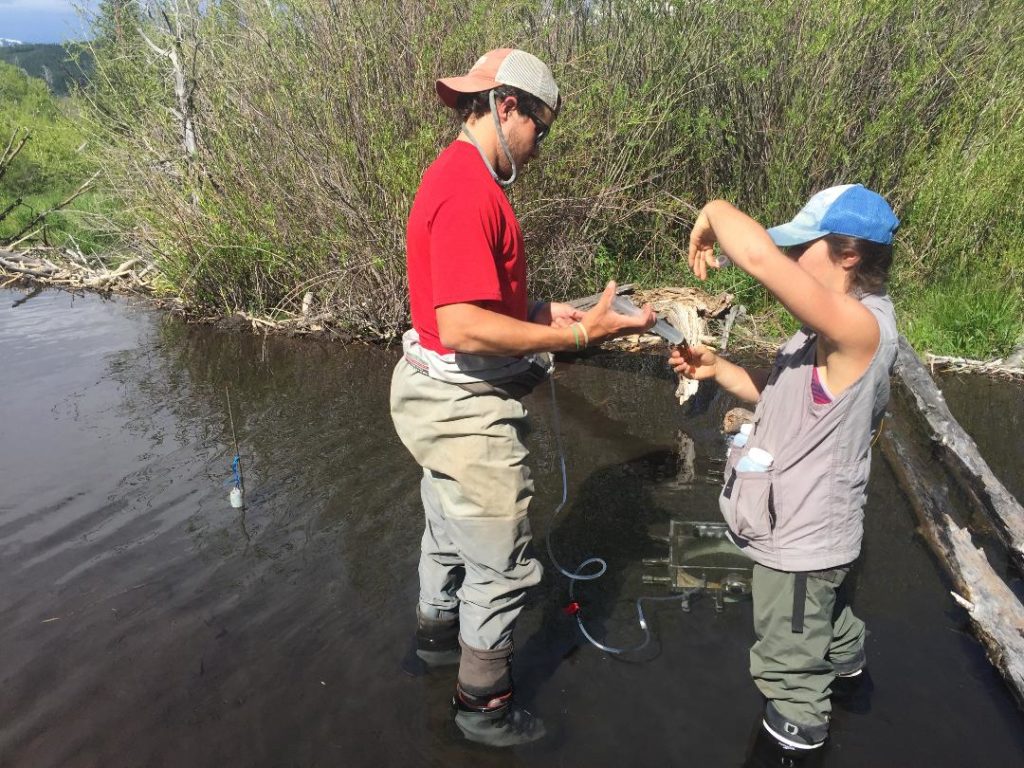The miniDOT® Logger is a completely submersible instrument that logs dissolved oxygen and temperature measurements. The oxygen sensor is an optode that measures dissolved oxygen concentration in water through a fluorescence method. Data are recorded to an internal SD card. Operation of the miniDOT® Logger such as setting the time and sample interval can be accomplished via the USB cable.

Can Kelp Forests be Used to Reduce Ocean Acidification?
August 23, 2021
Under Ice Phenomenon Studied with the Help of miniDOT® Loggers
October 27, 2021miniDOT® Loggers Help Determine if Beaver Ponds are Nitrogen Sinks
Project Details
- PRODUCT(S): miniDOT® Logger
- APPLICATION: Surface Water
- PARAMETER: Dissolved Oxygen, Temperature
- LOCATION: Logan River Basin in Northern Utah
- ORGANIZATION: Utah State University
- RECOGNITION: Janice Brahney, Deni Murray

Case Study Description
Non-point source (NPS) pollution is the result of human-related land use, such as farming. The run-off from this activity becomes nitrogen, phosphorus, and other heavy metals in nearby water systems. High levels of nitrogen and phosphorus can lead to harmful algal blooms, contaminated drinking water, and the destruction of aquatic ecosystems. Researchers in Utah set out to determine if beaver ponds, formed when beavers build dams in headwaters, are effective at trapping, processing, and cycling NPS pollutants.
Research Goals
Researchers from Utah State University chose three beaver ponds to conduct their study in the Logan River basin. They hypothesized that beaver ponds could be useful for the natural collection and processing of nitrogen, phosphorus, and other trace heavy metals.
The experiment was conducted in two parts. The first part was meant to determine whether beaver activity can reduce the amount of nitrogen, phosphorus, and other trace metals from traveling further downstream.
The second part of the study aimed to find when and where specific nitrogen reactions occur in a beaver pond.
Equipment and Methods
miniDOT® Loggers were used in the study to measure dissolved oxygen and temperature levels inside the benthic chambers used in the study, before they were deployed. A control miniDOT Logger was then placed outside of the benthic chambers after deployment to measure the daily dissolved oxygen cycles outside of the chamber environments.
The data collected from the control miniDOT was used to calculate pond respiration rates to be compared against the respiration rates from inside the benthic chambers.
Conclusions
The study concluded that beaver ponds do influence the fate of NPS pollutants through sediment-water interactions. This is determined by the amount of time water spends in a pond, how much of a given nutrient is brought into the pond from upstream, and the volume of sediment build up behind the beaver dam. The researchers discovered that, under specific conditions, beaver ponds can be significant sinks for nitrogen. Phosphorus retention and cycling is more variable and likely related to seasons or pond age.
The way a beaver pond is formed and the environmental conditions it exists in can affect its effectiveness as a nitrogen sink. Any beaver pond can change how nitrogen is cycled, but the overall effect of a specific beaver pond depends on its geomorphic composition. Researchers also discovered that the processing rates of nitrogen varied from spring to summer. Beaver ponds with oxygen-poor and organic-rich sediments tended to be more effective at processing and cycling nitrogen.

